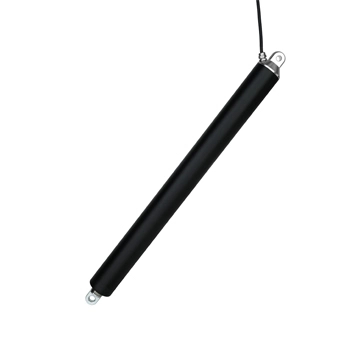
Tubular linear actuators are an essential component of many industrial applications, ranging from robotics to aerospace, healthcare, and automotive industries. They are widely used to convert rotational motion into linear motion with high accuracy, speed, and reliability.
Working Principle of Tubular Linear Actuators:
Tubular linear actuators work on the principle of electromagnetic induction. They consist of a permanent magnet, a moving coil, and a cylindrical body made of ferromagnetic material. When a current passes through the coil, it generates a magnetic field, which interacts with the magnetic field of the permanent magnet. The resultant force causes the coil to move along the axis of the cylinder, thereby converting electrical energy into linear motion.
Types of Tubular Linear Actuators:
Tubular linear actuators can be classified based on their construction, force, and speed. The following are the most common types of tubular linear actuators:
Solenoid Actuators:
Solenoid actuators are the simplest and most commonly used type of tubular linear actuator. They consist of a coil of wire and a ferromagnetic core, which moves inside the coil when current is applied. Solenoid actuators are widely used in applications where a small amount of force is required to move a load, such as in vending machines, door locks, and valves.
Voice Coil Actuators:
Voice coil actuators are similar to solenoid actuators, but they have a much larger range of motion and are more precise. They consist of a permanent magnet and a coil of wire, which is suspended within the magnetic field. When a current is passed through the coil, it generates a force that moves the coil in a linear direction. Voice coil actuators are widely used in applications such as robotics, automation, and precision positioning systems.
Linear Motor Actuators:
Linear motor actuators are the most powerful and fastest type of tubular linear actuators. They consist of a stator, which is a stationary coil of wire, and a moving rotor, which is a permanent magnet. When current is passed through the stator, it generates a magnetic field that interacts with the magnetic field of the rotor, causing it to move in a linear direction. Linear motor actuators are widely used in high-speed automation applications, such as semiconductor manufacturing and automotive assembly.
 DDTG-16 Micro Tubular Linear Actuator
DDTG-16 Micro Tubular Linear Actuator
 DDTG-28 Micro Tubular Linear Actuator
DDTG-28 Micro Tubular Linear Actuator
 DDTG-38 Micro Tubular Linear Actuator
DDTG-38 Micro Tubular Linear Actuator













